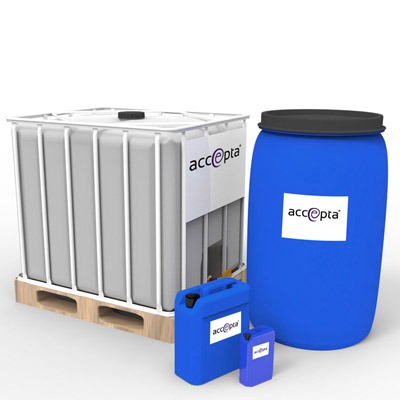Checking Out Cutting-Edge Foam Control Technologies for Sustainable Practices
Checking Out Cutting-Edge Foam Control Technologies for Sustainable Practices
Blog Article
A Comprehensive Overview to Carrying Out Foam Control Solutions in Your Operations
Effective foam control is an important facet of operational performance that frequently goes forgotten. Comprehending the details of foam generation can considerably affect both performance and item quality. By taking a look at crucial aspects such as application compatibility and employees training, organizations can enhance their foam management efforts.
Understanding Foam Obstacles
Foam obstacles are a substantial problem throughout different markets, impacting operational effectiveness and product quality. The development of extreme foam can hinder procedures such as mixing, transportation, and storage space, resulting in raised downtime and waste. In fields like food and beverage, drugs, and petrochemicals, foam can hinder manufacturing lines, creating product inconsistencies and contamination threats.
Furthermore, foam can obstruct devices functionality, bring about expensive fixings and maintenance. In wastewater treatment, foam can interrupt clarifier operations, resulting in reduced treatment performance and regulatory conformity concerns.
Comprehending the underlying root causes of foam generation is important for reliable management. Aspects such as surfactants, temperature changes, and frustration levels can all add to foam manufacturing. Identifying these aspects permits industries to execute targeted approaches that reduce foam development while maintaining item honesty.
Kinds Of Foam Control Solutions

Mechanical services include the use of gadgets such as foam skimmers or defoamers. Chemical solutions, on the various other hand, include the application of defoaming representatives-- materials that interrupt the foam framework, leading to its collapse. Foam Control.
Last but not least, functional methods concentrate on procedure changes. This might entail changing tools criteria, such as temperature level and stress, or transforming the circulation prices of fluids to lessen foam generation. Carrying out great housekeeping techniques can additionally alleviate foam formation by decreasing contaminants that contribute to foam security.
Choosing the proper foam control service involves assessing the specific demands of the procedure, including the type of procedure, the features of the products included, and safety factors to consider.
Picking the Right Products
Selecting the best foam control products calls for a comprehensive understanding of the specific application and its one-of-a-kind difficulties. Elements such as the kind of foam, the environment in which it happens, and the wanted outcome all play crucial roles in product selection. Foam Control. For example, in markets such as food handling, it is vital to choose food-grade defoamers that follow safety and security policies while effectively managing foam.
Additionally, take into consideration the viscosity of the fluid where the foam problem exists. Some products are developed for low-viscosity applications, while others are customized for thicker liquids. Compatibility with existing Full Report procedures is one more essential element; the chosen foam control representatives must integrate seamlessly without interfering with total procedures.
One more important variable is the technique of application. Some products might require dilution, while others can be applied straight. Evaluating Learn More Here the convenience of usage and the required dosage can give insights into the product's efficiency and cost-effectiveness.
Application Techniques
Effective implementation approaches for foam control services need a methodical technique that straightens item option with functional demands. The initial step entails a complete analysis of the procedures where foam happens, determining certain areas that require treatment. By engaging cross-functional teams, consisting of manufacturing, design, and high quality assurance, companies can gather understandings that educate the option of one of the most reliable foam control products.
Next, it is essential to establish clear purposes for foam reduction, guaranteeing that these goals are quantifiable and attainable. This may involve specifying acceptable foam levels and the timelines for execution. Training personnel on the homes and application techniques of picked foam control representatives is equally vital, as appropriate use is crucial for optimal outcomes.
In addition, incorporating foam control services right into existing workflows needs mindful planning. Eventually, a well-structured approach will improve functional performance while efficiently handling foam-related obstacles.
Surveillance and Examining Performance
Monitoring and assessing the efficiency of foam control options is crucial for making sure that applied strategies yield the desired results. This process involves methodical data collection and analysis to examine the efficiency of foam control representatives and techniques. Secret efficiency check my reference signs (KPIs) must be developed before implementation, permitting a clear baseline versus which to gauge progression.

Evaluating effectiveness likewise requires regular evaluations of foam control procedures and representative effectiveness. This can be achieved through sampling and screening, permitting operators to determine if current solutions are meeting functional needs. Furthermore, it is critical to obtain feedback from employee who interact with these systems daily, as their insights can disclose operational subtleties that measurable data might overlook.

Inevitably, an organized monitoring and analysis structure aids identify necessary adjustments, guaranteeing that foam control services stay reliable, cost-effective, and aligned with organizational objectives.
Conclusion
Finally, reliable foam control options are crucial for enhancing operational effectiveness and maintaining product high quality. A thorough understanding of foam difficulties, integrated with the option of suitable items and application strategies, facilitates the successful administration of foam generation. Spending and developing measurable kpis in employees training additionally boost the performance of foam control procedures. Routine monitoring and evaluation make sure constant renovation, ultimately bring about a much more efficient and streamlined functional setting.
Applying excellent housekeeping methods can additionally reduce foam development by lowering impurities that add to foam stability.
Choosing the ideal foam control items needs an extensive understanding of the specific application and its unique challenges (Foam Control).Successful execution techniques for foam control solutions need an organized technique that lines up product selection with functional demands.In verdict, effective foam control solutions are vital for maximizing operational effectiveness and preserving product top quality. A thorough understanding of foam obstacles, integrated with the option of proper products and execution strategies, helps with the effective management of foam generation
Report this page